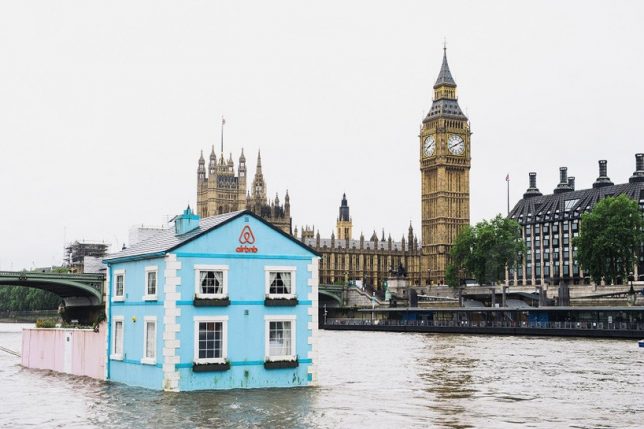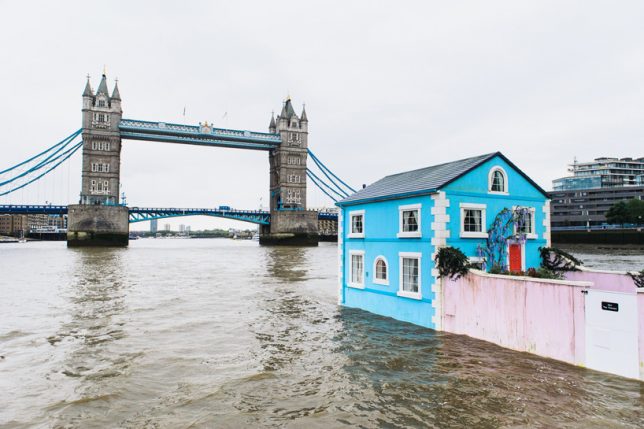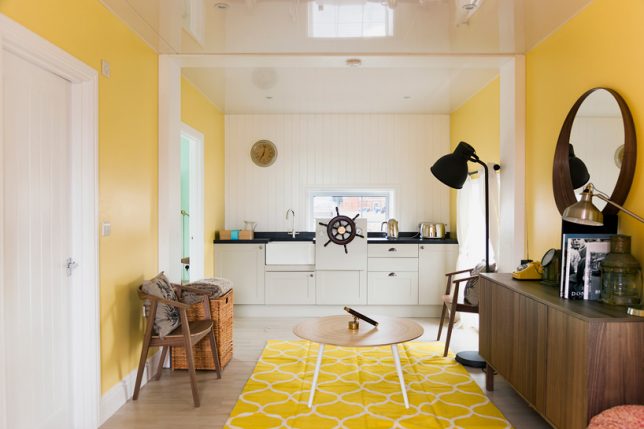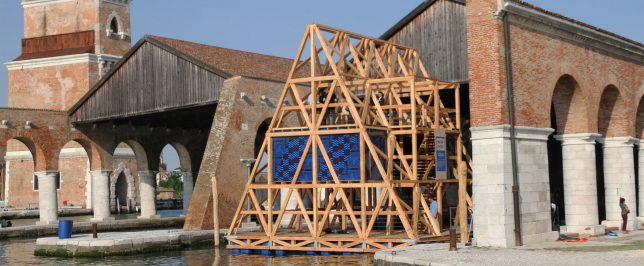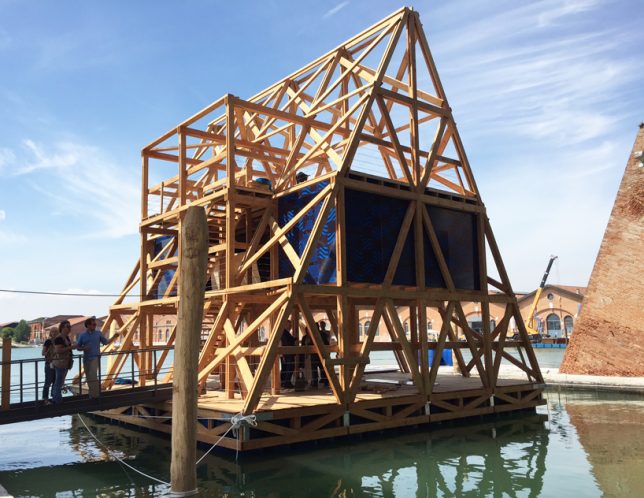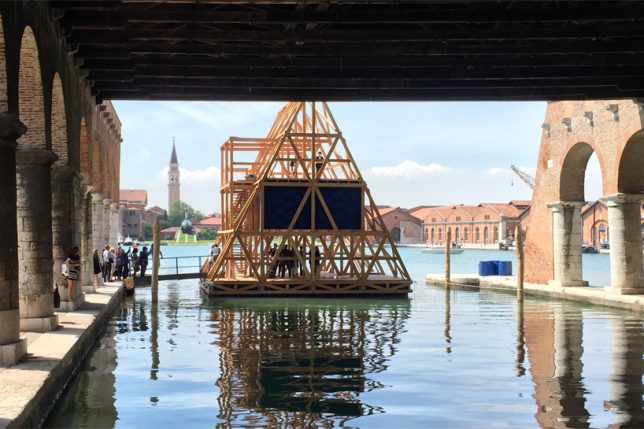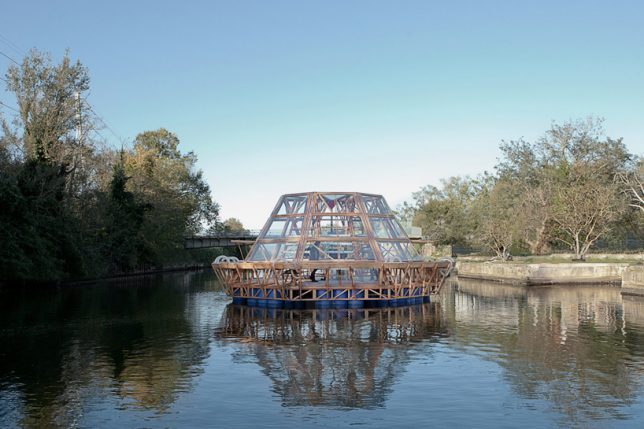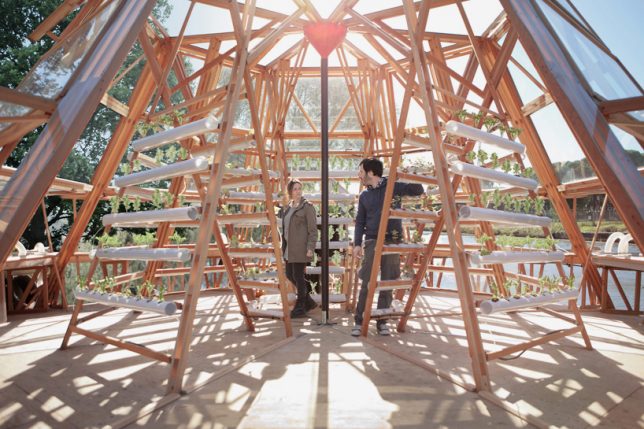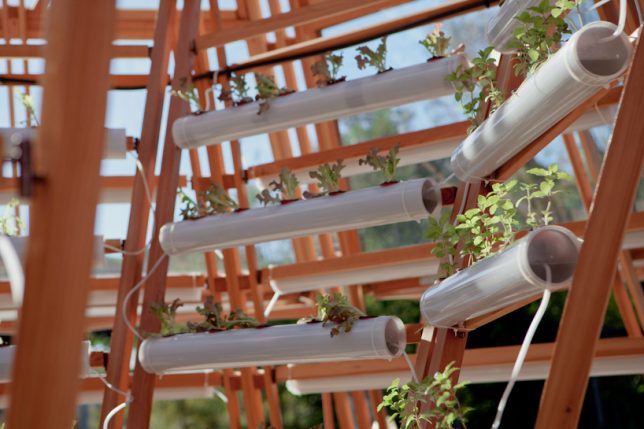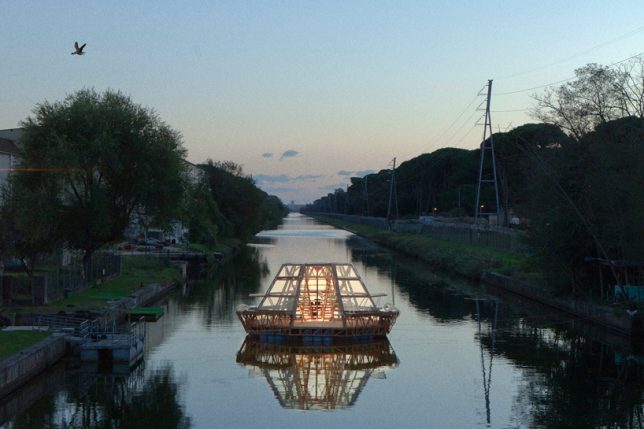AirBNB Floating House
Will more future AirBnB rentals be on the water? Perhaps none quite like this, which looks like an ordinary house and walled garden that was lifted off its terrestrial foundation and plunked right into the Thames. The rental contains two bedrooms, a living room, a working bathroom and a garden complete with lush grass and an apple tree. The house aimed to provide ‘new perspectives on the city’ during its short run on the river in May 2015.
NLÉ Floating School
A second iteration of the Makoko Floating School, this three-story wooden creation by NLÉ debuted at the Venice Architecture Biennale waterfront exhibition and contains classrooms at its middle level and a playground at the bottom. The original version was created as a working floating school for water-based cities in Africa, and this new one is a “improved, prefabricated” double. Architect Kunlé Adeyemi won the Silver Lion for a Promising Young Participant for the project.
Boat-Based Art Exhibits
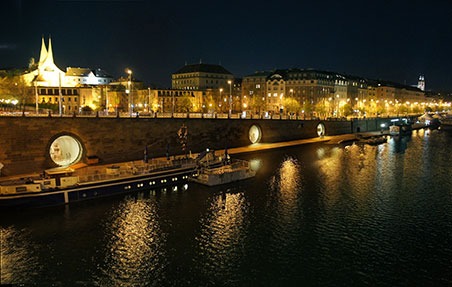
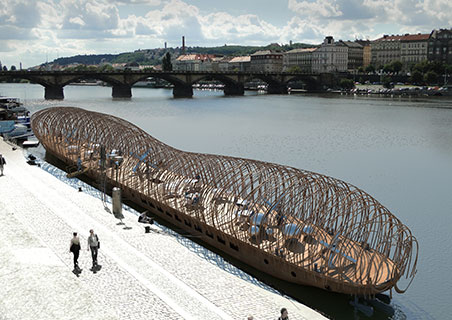
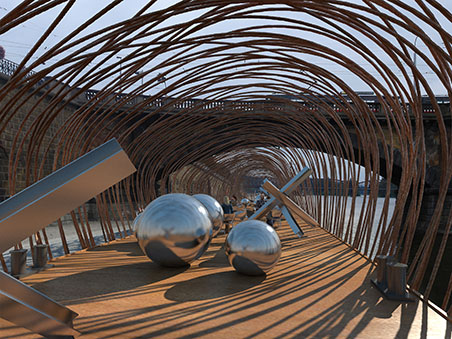
Self-contained galleries can come and go, traveling by river or sea to various cities, docking at permanent museums located along the water’s edge. Architect Petr Janda of Prague envisions a new use for the Vltava waterfront promenade as an extension of the existing (A)VOID Gallery. Subterranean gallery spaces transition between the land-based structures and the waterfront, with giant circular acrylic glass windows opening in any direction so visitors can walk out to the dock. There, floating pavilions contain additional exhibitions.
Crop Cultivation: Jellyfish Barge
The Jellyfish Barge by Italian firm PNAT is a response to predictions that the global population will swell to almost 10 billion within the next 40 years, requiring fresh ideas for cultivating food. This floating garden requires no soil or chemical energy consumption and can purify salt, brackish or polluted water using solar energy. The low-cost structure consists mostly of wooden frames sitting on recycled plastic drums and supports a high-efficiency hydroponic harvesting method that provides up to 70% of water savings compared to traditional systems.
